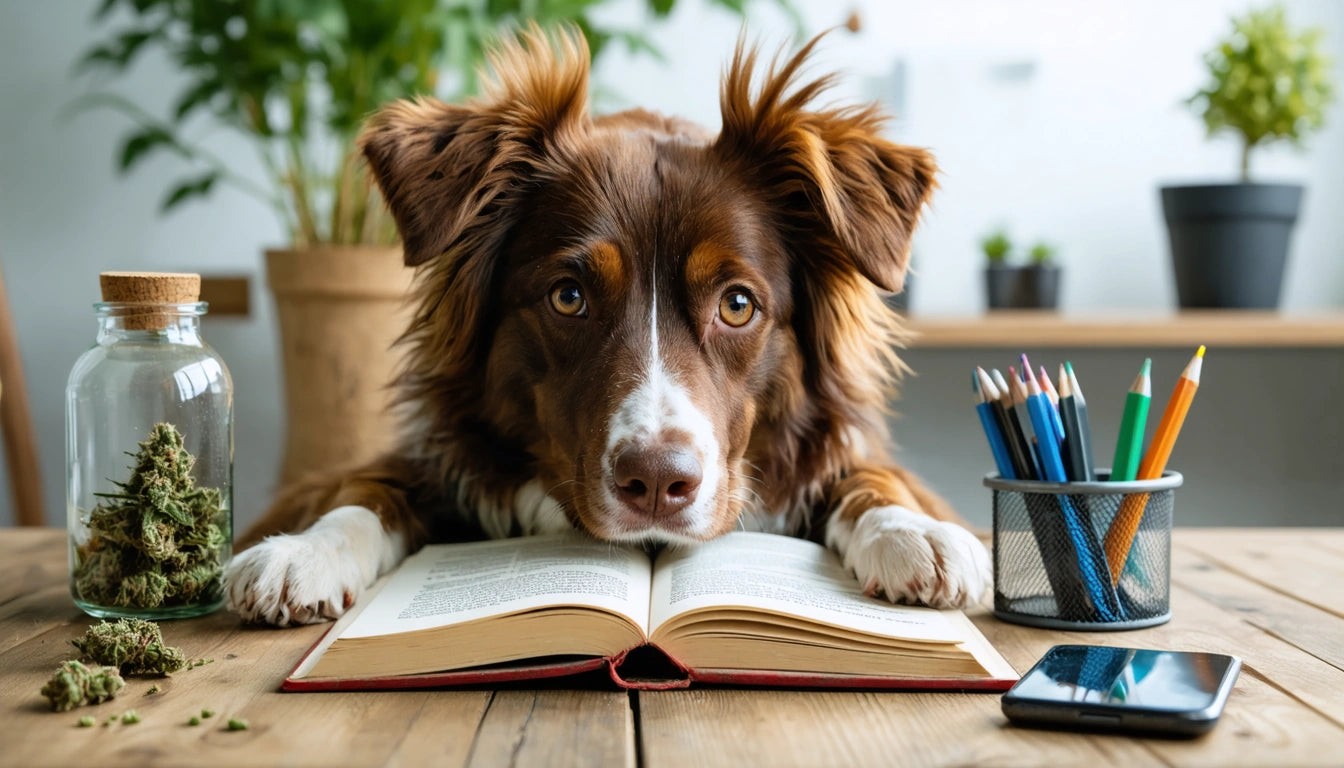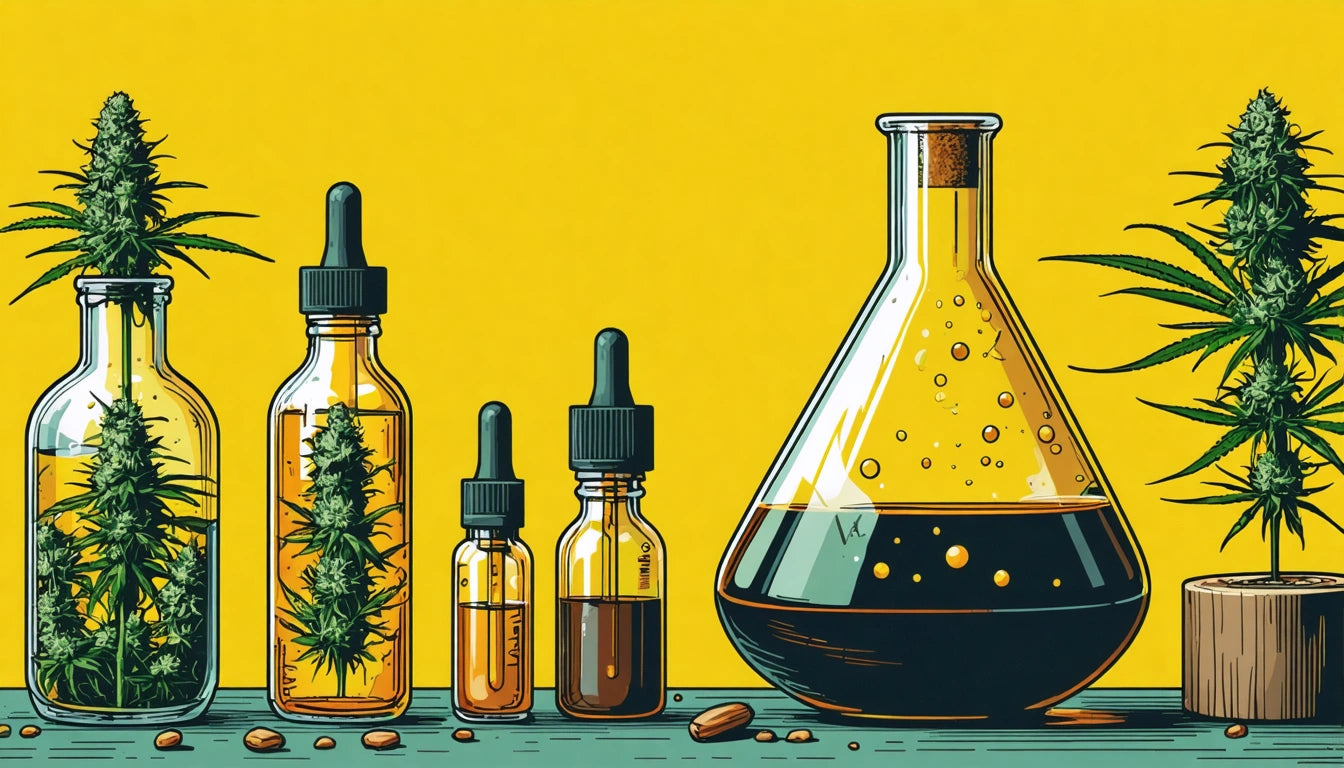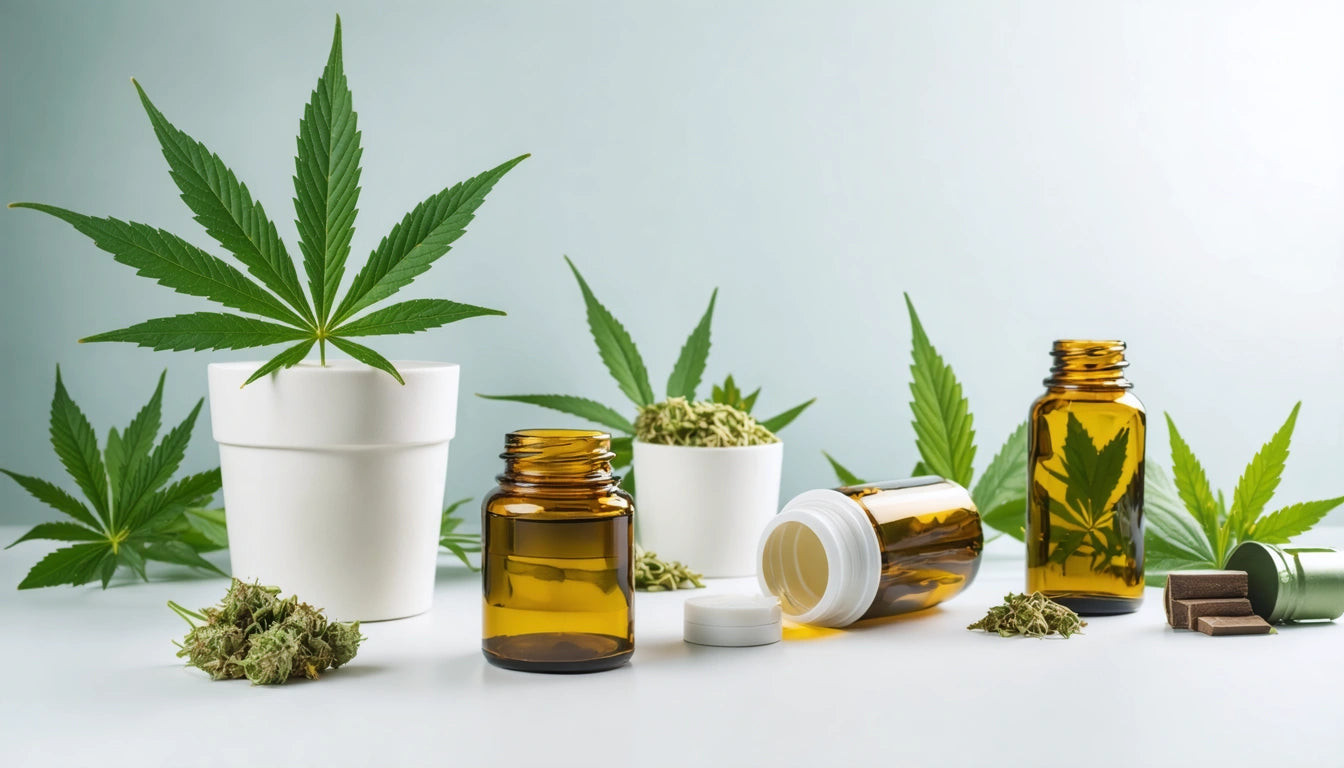Table of Contents
What to Do If Your Dog Is High: A Guide for Concerned Pet Owners
Cannabis exposure in pets has become increasingly common as marijuana products become more accessible in homes. If you're thinking, "my dog is high, what do I do?" you're not alone. This guide will help you recognize the signs of cannabis intoxication in dogs, understand when immediate veterinary care is needed, and learn how to prevent future incidents.
Recognizing Cannabis Intoxication in Dogs
Dogs can be exposed to cannabis through direct ingestion of edibles, flower, or concentrates, as well as through secondhand smoke. According to research on cannabis exposure in pets, dogs are particularly sensitive to THC due to their abundance of cannabinoid receptors.
Common Symptoms of Cannabis Intoxication in Dogs
- Lethargy or excessive sleepiness
- Dilated pupils and glassy eyes
- Difficulty walking or loss of coordination
- Urinary incontinence
- Hypersensitivity to touch, light, or sound
- Slow heart rate (in severe cases)
- Vomiting
- Tremors or twitching
The severity of symptoms depends on your dog's size, the amount ingested, and the concentration of THC. Small dogs typically show more pronounced effects from the same dose compared to larger breeds.
Immediate Steps to Take When Your Dog Is High
If you think your dog is high, remain calm and follow these steps:
- Remove any remaining cannabis products from your dog's reach
- Note what was consumed and approximately how much
- Check the time when exposure likely occurred
- Monitor vital signs like breathing and responsiveness
- Keep your dog in a quiet, comfortable environment
- Ensure access to water but don't force drinking
Understanding the effects and risks of cannabis on dogs can help you better assess the situation and determine your next steps.
When to Seek Veterinary Care
While mild cannabis exposure might not require emergency treatment, certain situations demand immediate veterinary attention:
Call Your Vet Immediately If:
- Your dog consumed edibles containing chocolate, raisins, or xylitol
- Your dog is experiencing severe symptoms like difficulty breathing
- Your dog is unresponsive or having seizures
- Your dog is a puppy, senior, or has existing health conditions
- You're unsure of how much was consumed
Be honest with your veterinarian about what happened. Veterinarians are focused on helping your pet, not reporting drug use, and accurate information is crucial for proper treatment.
Home Care for Mildly Affected Dogs
For mild cases where veterinary care isn't immediately necessary, these home care strategies may help:
Keep your dog in a quiet, temperature-controlled room with minimal stimulation. Maintain regular monitoring of their condition, checking breathing and responsiveness every 30-60 minutes. Offer small amounts of water to prevent dehydration, but don't force food unless advised by a veterinarian.
Some pet owners have found that using proper storage solutions like secure, child-resistant storage bags can prevent accidental exposure in the first place, keeping curious pets from accessing cannabis products in the home.
Remember that while humans might seek ways to sober up quickly from cannabis, these methods aren't appropriate for dogs. Never give your dog any medications intended to counteract the high unless specifically prescribed by a veterinarian.
Prevention Strategies for Cannabis Exposure
The best solution to "what to do if your dog is high" is prevention. Consider these strategies to keep your pets safe:
- Store all cannabis products in locked, child-resistant containers
- Keep edibles, flower, and concentrates in high cabinets out of reach
- Clean up any dropped material immediately during use
- Smoke in a separate area from your pets
- Inform guests about household rules regarding cannabis use around pets
- Consider designating a pet-free room for cannabis storage and use
Proper storage is particularly important for edibles, which may be especially attractive to dogs due to their appealing smell and taste. Using odor-proof containers can reduce the chance that your pet will be attracted to these products.
Long-Term Considerations and Pet Safety Practices
If you're wondering "what to do if my dog is high" after an incident has already occurred, consider this an opportunity to implement better safety practices. Create a comprehensive pet safety plan that accounts for all potentially harmful substances in your home, not just cannabis.
Research indicates that animals respond differently to cannabis than humans do, and what might be a pleasant experience for a person can be frightening and dangerous for a pet. This fundamental difference underscores the importance of preventing exposure.
For households where cannabis is regularly present, consider investing in pet-specific first aid training and keeping the contact information for pet poison control readily available. The ASPCA Animal Poison Control Center (888-426-4435) offers 24/7 guidance for pet poisoning emergencies, including cannabis ingestion.
By taking proactive measures to protect your pets from cannabis exposure, you can avoid the stress and worry of dealing with an intoxicated pet. Remember that responsible cannabis use includes being mindful of how storage and consumption practices affect everyone in your household, including your four-legged family members.











Leave a comment
All comments are moderated before being published.
This site is protected by hCaptcha and the hCaptcha Privacy Policy and Terms of Service apply.